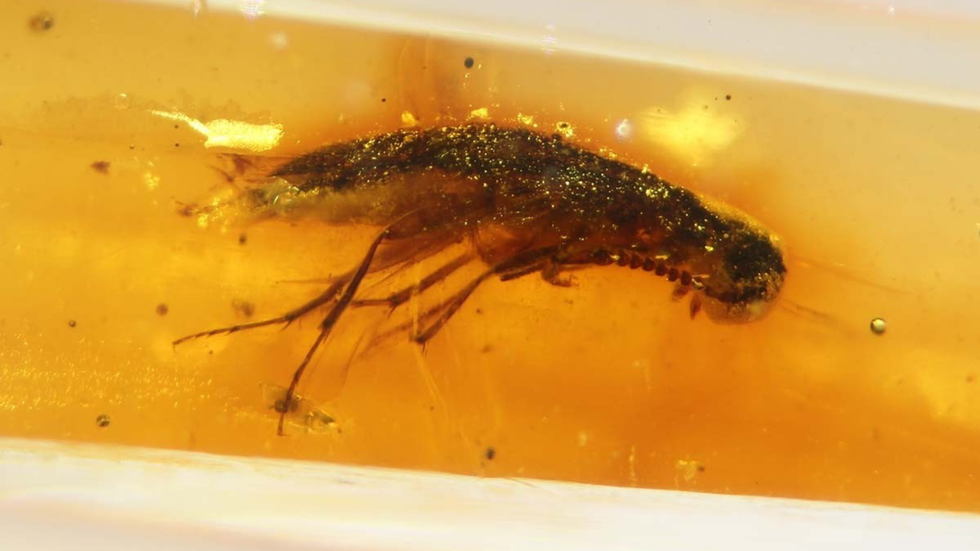Scientists left stunned after discovering 112-million-year-old ‘time capsule’ packed with ancient insects
The study's lead researcher has described the world-first find as 'incredibly exciting'
Don't Miss
Most Read
Latest
Scientists have been left stunned after discovering insects that roamed the Earth more than 112 million years ago trapped in a natural "time capsule" in South America.
More than 20 species of insects, including flies and wasps, from the Early Cretaceous period were discovered trapped in amber in an Ecuadorian quarry.
Amber is a fossilised tree resin which formed over millions of years and preserves organisms trapped within it in incredible detail.
Researchers have said it is the first time that ancient insects have ever been found preserved in the ancient tree resin in South America.

Researchers have said it is the first time that ancient insects have ever been found preserved in the ancient tree resin in South America
|ENRIQUE PENALVER
TRENDING
Stories
Videos
Your Say
The find is thought to be one of only a few known fossils from the ancient supercontinent Gondwana ever uncovered in the region.
Scientists have also suggested the find is proof that the area was covered in a humid forest teaming with life.
Study lead author Professor Xavier Delclos described the discovery as “an incredibly exciting moment”.
The researcher said: “We never expected to find such a rich deposit, with thousands of amber pieces within a layer just 70 centimetres thick.

The find is thought to be one of only a few known fossils from the ancient supercontinent Gondwana ever uncovered in the region
|GETTY
"Seeing so much amber in situ was truly thrilling, and it’s much richer than any other known Cretaceous amber deposit in the northern hemisphere.
“The amber from the Genoveva quarry in Ecuador has opened a small window into a time when global change was underway, from forests dominated by conifers to the tropical forests dominated by flowering plants that we know today.”
A team of scientists discovered the creatures after examining 60 different amber samples found in Ecuador's Genoveva quarry.
More than half of the insects detected were species of fly, with others including parasitic wasps, a springtail and a beetle.
SCIENCE - READ THE LATEST:
- Dorset coast fossil identified as new 'sword dragon' species
- 'Exact time of Christ's crucifixion' is revealed in extraordinary new study
- Fears of 'divine punishment' after 4,000-year-old painting disappears from 'cursed' Egyptian tomb
- New details released of 'interstellar object' after humanity told to 'prepare for wake-up call'
Scientists say that as additional amber deposits are discovered across South America and former parts of Gondwana, including Australia and Antarctica, they could reveal new insights into what life was like millions of years ago.
Prof Delclos said: “Searching for new continental outcrops along the margins of ancient Gondwana, especially in more humid palaeoenvironments, should help to uncover previously unknown amber deposits.
“This will give a better idea of how the region was changing as the two great southern continents, South America and Africa, began to drift apart.
"Studying the fauna and flora of these ancient ecosystems is essential for understanding the palaeobiogeography of many groups both living and dead.”

The oldest amber discovered so far was dated back to more than 320 million years ago
|GETTY
The oldest amber discovered so far was dated back to more than 320 million years ago.
However, the most ancient discovered to contain signs of life was traced back to the Triassic era, more than 200 million years ago.
Scientists previously discovered a baby snake encased in amber in Myanmar, with hell ants in France also found entombed in the fossils.
Researchers have affirmed that they plan to keep studying the amber collection to uncover more about life during the Cretaceous period.
Our Standards: The GB News Editorial Charter










